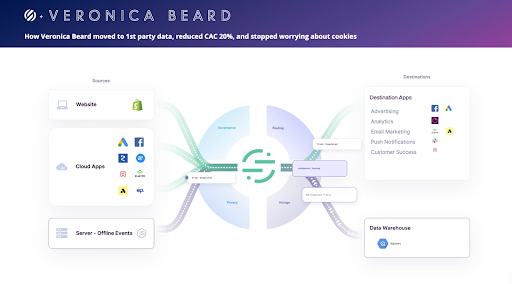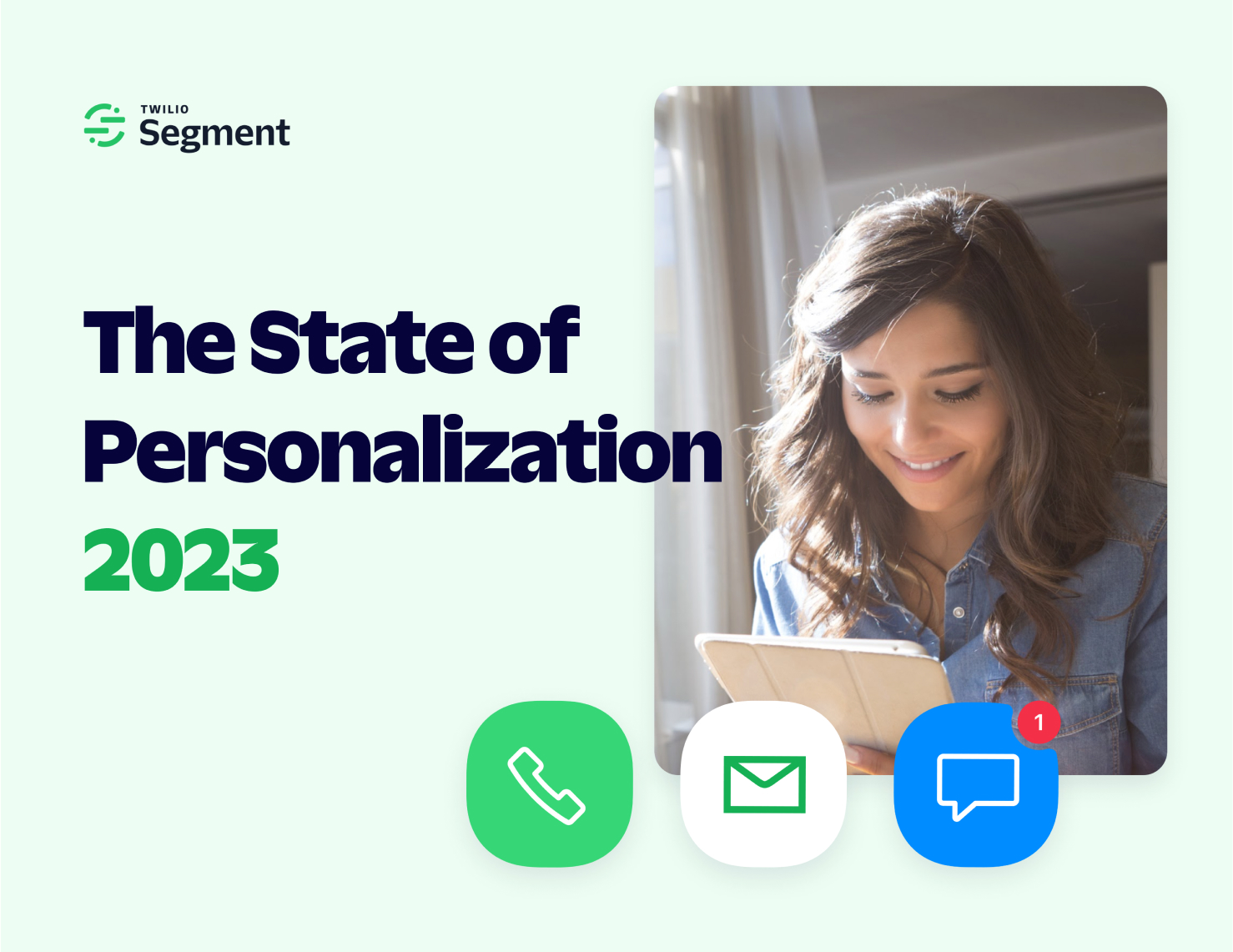Their team can collect product review information, for instance, from its platform, and create a Twilio Engage audience of users that have only left one-star reviews, then deliver this group of users to its advertising channels as a real-time suppression list.
By using real-time audience capabilities for suppression in its advertising destinations, the company saves unhappy, or “low-value” customers from unwanted ads, making marketing spend more efficient.
Lesson 3: The Power of First-Party Data
Third-party data has long been the dominant customer data source for marketing and advertising. As data aggregators collect end-user data through cookies and browser behavior, companies pay for access to this third-party data, either directly or through advertising platforms.
Alternatively, by harnessing first-party data from interactions with their customers Veronica Beard’s cookieless acquisition strategy has enabled it to get ahead of anti-tracking privacy initiatives while maintaining — and even improving — its paid channel performance.
Compared to baseline metrics from Facebook Audience Network, the team witnessed an 11% increase in return on ad spend (ROAS) and 20% decrease in customer acquisition cost (CAC) last year when leveraging its high-value Twilio Engage audiences to power Facebook Lookalike Audiences.
“With Twilio Segment, we leveraged our first-party customer data to improve our [advertising] strategy, and now, Facebook went from being our most markdown-heavy channel to now the most full price-heavy channel, even as we significantly increased our ad spend this year.” – Max Lagresle, Associate Director of Data at Veronica Beard
Looking for more from SIGNAL?
On November 2-3, Twilio Segment hosted its annual customer and developer conference, featuring 30,000 attendees and 50+ customer studies and thought leadership sessions.
If you found these insights from Veronica Beard’s session at SIGNAL helpful, you can register here to watch on-demand and learn more about how our customers’ harness and activate customer data.
You can also review our recap of the entire conference here.


